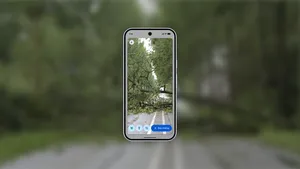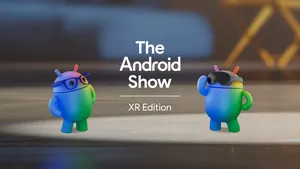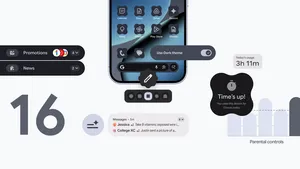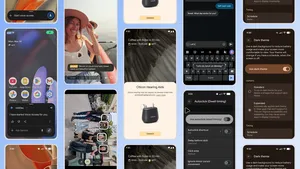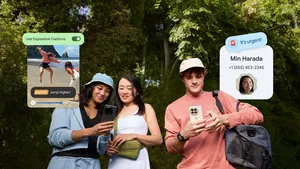Making audio more accessible with two new apps
The World Health Organization estimates that by the year 2055, there will be 900 million people with hearing loss. We believe in the power of technology to help break down barriers and make life a little easier for everyone. Today, we’re introducing two new apps for Android designed to help deaf and hard-of-hearing people: Live Transcribe and Sound Amplifier.
Bringing captions to conversations with Live Transcribe
Dimitri Kanevsky is a research scientist at Google who has worked on speech recognition and communications technology for the last 30 years. Through his work, Dimitri—who has been deaf since early childhood—has helped shape the accessibility technologies he relies on. One of them is CART: a service where a captioner virtually joins a meeting to listen and create a transcription of spoken dialogue, which then displays on a computer screen. Dimitri’s teammate, Chet Gnegy, saw the challenges Dimitri faced using CART: he always carried multiple devices, it was costly and each meeting required a lot of preparation. This meant Dimitri could only use CART for formal business meetings or events, and not everyday conversations.
That inspired Chet to work with the Accessibility team to build a tool that could reduce Dimitri’s effort spent preparing for conversations. We thought: What if we used cloud-based automatic speech recognition to display spoken words on a screen? A prototype was built and Googlers across a bunch of our offices—from Mountain View to Taipei—got involved. The result is Live Transcribe, an app that takes real-world speech and turns it into real-time captions using just the phone’s microphone.
Live Transcribe has the potential to give people who are deaf or hard of hearing greater independence in their everyday interactions. It brought Dimitri closer to his loved ones—he’s now able to easily communicate with his six-year-old twin granddaughters without help from other family members. We’ve heard similar feedback from partners at Gallaudet University, the world’s premier university for deaf and hard of hearing people, who helped us design and validate that Live Transcribe met needs of their community.
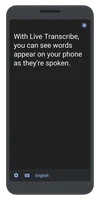
Live Transcribe is available in over 70 languages and dialects. It also enables two-way conversation via a type-back keyboard for users who can’t or don’t want to speak, and connects with external microphones to improve transcription accuracy. To use Live Transcribe, enable it in Accessibility Settings, then start Live Transcribe from the accessibility button on the navigation bar. Starting today, Live Transcribe will gradually rollout in a limited beta to users worldwide via the Play Store and pre-installed on Pixel 3 devices. Sign up here to be notified when it’s more widely available.
Clarifying sound with Sound Amplifier
Everyone can use a little audio boost from time to time, especially in situations where there’s a lot of background noise—like at a loud cafe or airport lounge. Today, we’re launching Sound Amplifier, which we announced at Google I/O last year.
With Sound Amplifier, audio is more clear and easier to hear. You can use Sound Amplifier on your Android smartphone with wired headphones to filter, augment and amplify the sounds in your environment. It works by increasing quiet sounds, while not over-boosting loud sounds. You can customize sound enhancement settings and apply noise reduction to minimize distracting background noise with simple sliders and toggles.
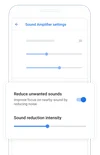
Sound Amplifier is available on the Play Store and supports Android 9 Pie or later phones and comes pre-installed on Pixel 3. With both Live Transcribe and Sound Amplifier, our goal is to help the hundreds of millions of people who are deaf or hard of hearing communicate more clearly.

